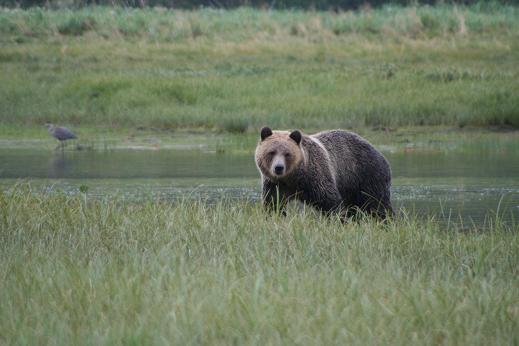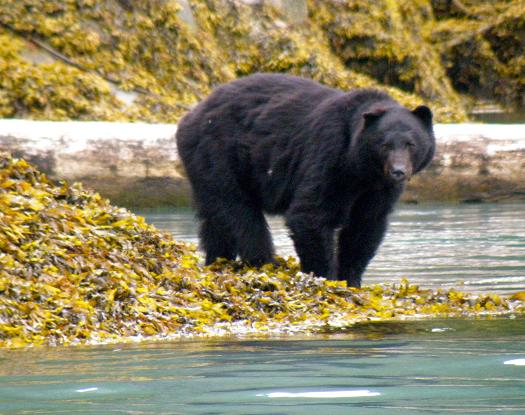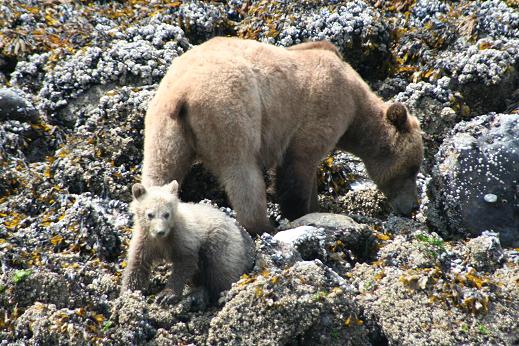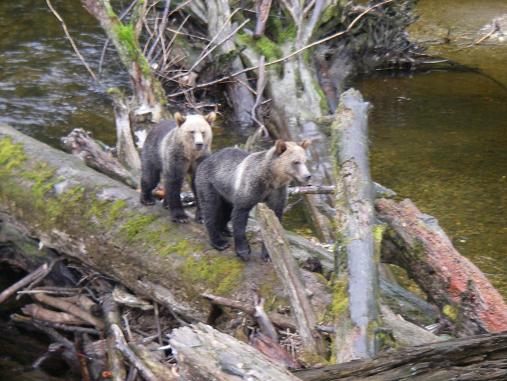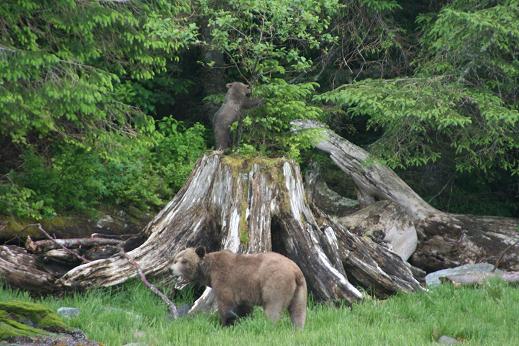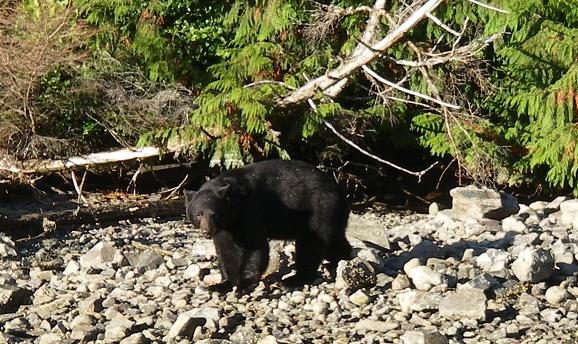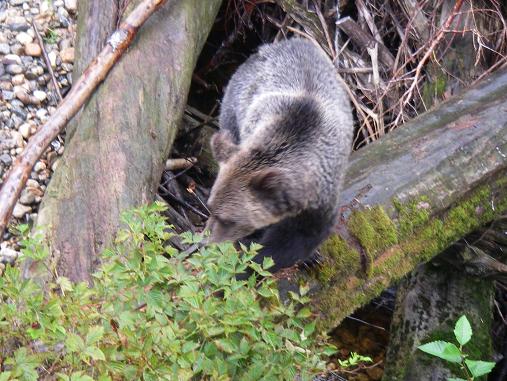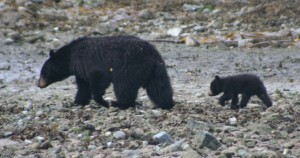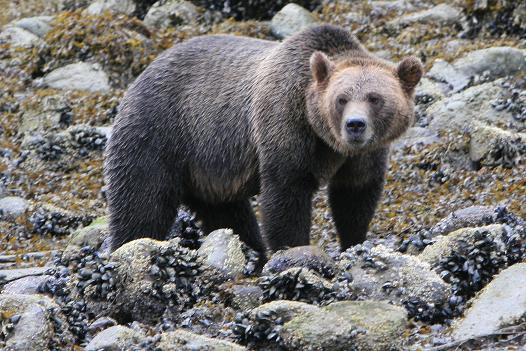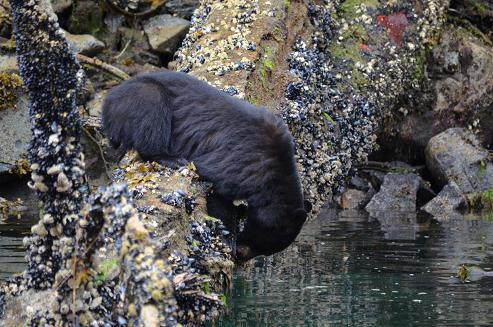 Black bears are normally on the beaches to turnover rocks. This inter-tidal zone “food” is high in protein and is made up of crab, clams, barnacles, amphipods and other tiny invertebrates. The “beach food” is important because plant food is relatively scarce during spring and bears will continue to loose weight until well into June. Plant foods make up the majority of a bear’s diet (sometimes, as much as 90%). The black bears are kept from the salmon rivers by the grizzly so the beaches remain one of their main sources of protein all year. This bear is playing the acrobat by balancing on a log while scraping off barnacles and muscles.
Black bears are normally on the beaches to turnover rocks. This inter-tidal zone “food” is high in protein and is made up of crab, clams, barnacles, amphipods and other tiny invertebrates. The “beach food” is important because plant food is relatively scarce during spring and bears will continue to loose weight until well into June. Plant foods make up the majority of a bear’s diet (sometimes, as much as 90%). The black bears are kept from the salmon rivers by the grizzly so the beaches remain one of their main sources of protein all year. This bear is playing the acrobat by balancing on a log while scraping off barnacles and muscles.
